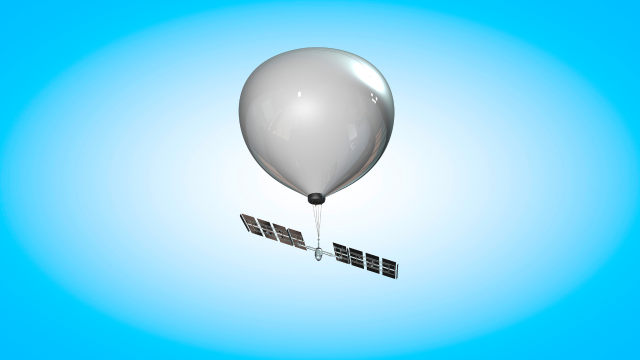Welcome back to Ask Giz, the fortnightly series where we answer your burning questions from all over the tech and science world.
If you’d like to submit a question, head on over to the submissions page. We’d love to hear it and find you an answer.
Today’s question comes from Mel in Sydney. Mel wants to know: How do spy balloons get there?
Spy balloons have been quite topical over the past month, after one entered U.S. airspace after being detected in Alaska, then flying through Canada to reach the mainland U.S., before it was shot down (all according to CBS News). In the following days, three more unidentified flying objects were shot down in the U.S.. President Joe Biden said there was no indication that these were linked to any foreign surveillance program.
But that’s neither here nor there – that’s just a slight recap on why spy balloons are topical at the moment, but not how they get up into the airspace above a country.
Let’s dive into how a spy balloon might appear overhead and work; if it’s launched locally within the borders of the country being spied on or from elsewhere.
How do spy balloons get there?
What we’re talking about is not your typical helium balloon. Spy balloons operate in the stratosphere, carrying massive technology payloads used for surveillance – think antennas and solar panels. As such, there’s a bit more to it than just inflating it and letting it rise.
They’re cheaper to create than satellites and can spend longer durations over a designated area. It’s a similar concept to Google’s ‘Loon’ project, which sought to deliver balloon-operated internet to the world (it has since been spiked).
According to The Guardian, it’s believed that the spy balloon that caused headlines in February originated from the island province of Hainan, where it’s suspected that China has staged balloon surveillance programs over at least five continents.
Hainan is an island off the coast of China, North of Vietnam and west of Taiwan and the Philippines. It’s about 7,800km from Alaska or 11,000km from the continental U.S. (as measured on Google Earth).
That’s quite the distance for a gas balloon to travel, but it’s fully capable of doing it. The Washington Post has published a terrific analysis of how spy balloons work, or in this case, how “zero-pressure ultra-long duration balloons” work.
Going off this, the balloon in question could hover above the intended locations for weeks or months. Raising and lowering itself by taking in and expelling air, the balloon navigates to its intended location by finding winds that will whiff it off to the designated point.
When the balloon completes its analysis, either a plane could collect it mid-air, or the payload (with onboard data recorded) would be released and parachuted back to Earth, where it is then collected and analysed.
So this question doesn’t have a full-circle answer. While it’s certainly possible for spy balloons to be launched from within the borders of the country being spied on, the balloons we’re talking about here are capable of withstanding tumultuous weather conditions and long periods of uptime.
Deflated
If you’d like to submit a question to be answered in a future Ask Giz instalment, we’d love to hear it.
Ask Giz is a fortnightly series where we answer your questions, be it tech, science, gadget, health or gaming related. This is a reader-involved series where we rely on Gizmodo Australia’s audience to submit questions. If you have a question for Giz, you can submit it here. Or check out the answer to our last Ask Giz: Can You Overdose on Weed?
